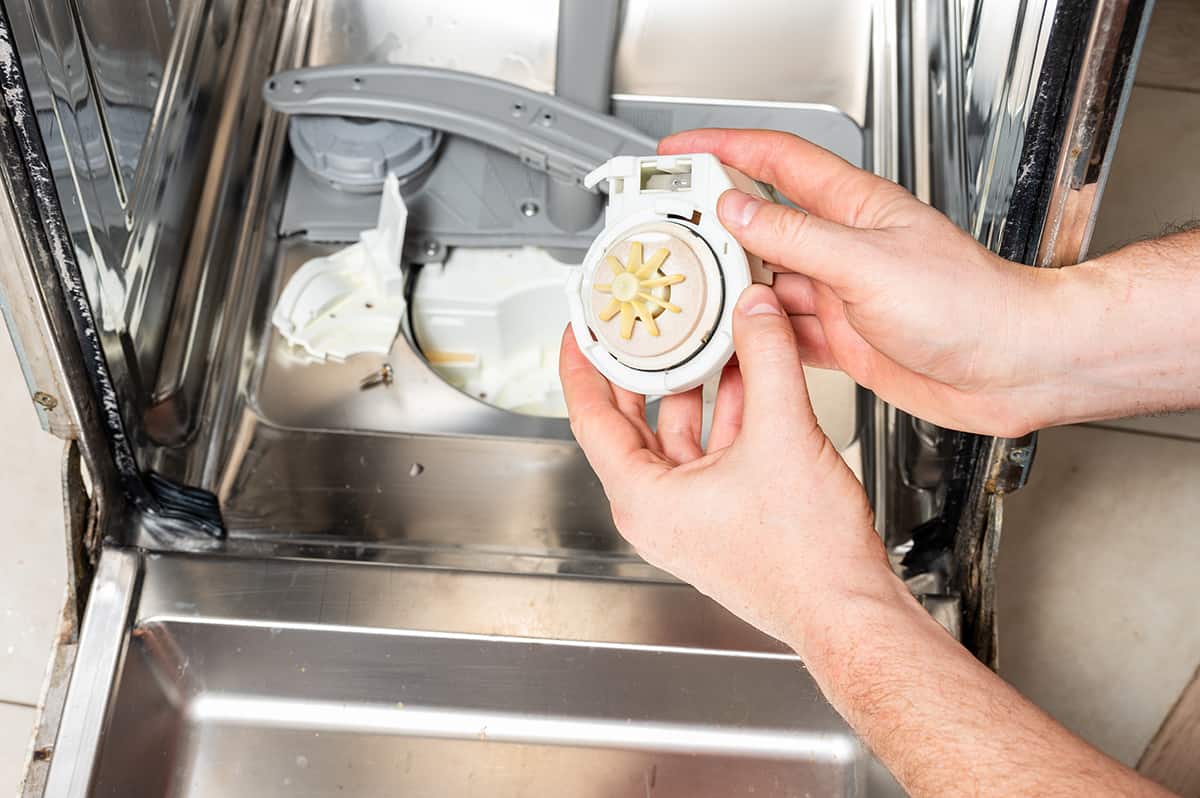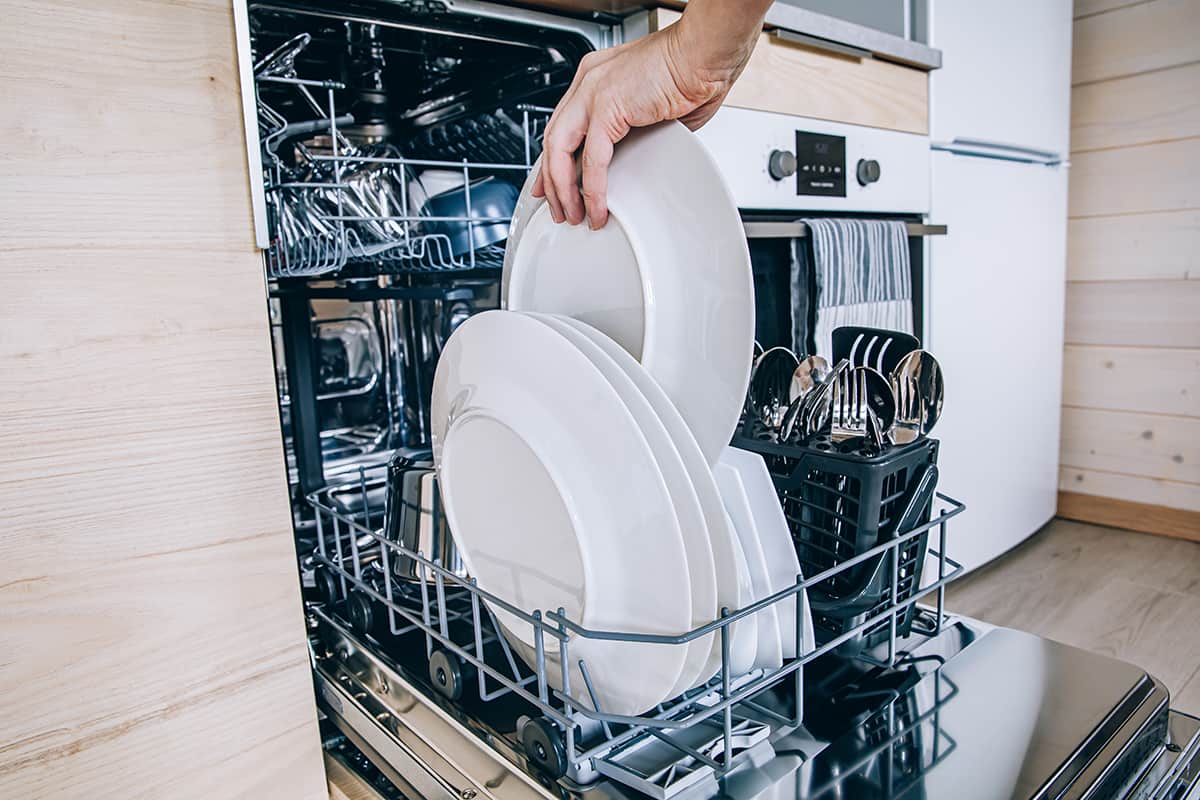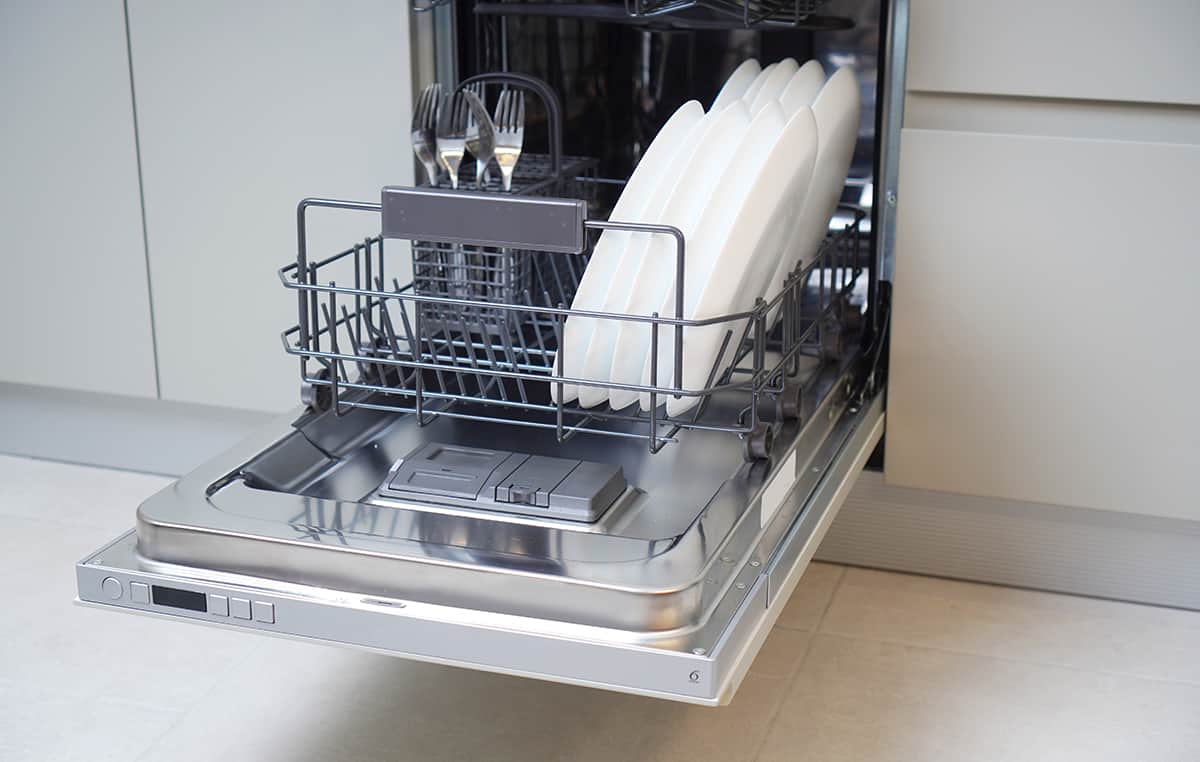Home appliances, such as refrigerators and dishwashers, are designed to be used constantly. In fact, there is no reason not to leave the appliances plugged in since you would need to use them almost if not every day. However, if you’re going out for weeks or months at a time, what will happen to your reliable dishwasher?
Leaving a dishwasher dormant for extended periods of time can cause it to break down. It relies on constant operation to maintain its working status.
Why is it that your dishwasher needs to run in order to stay in tip-top shape? And what can you do to keep your dishwasher from breaking down during extended periods of unuse? I’ll answer these questions and more in the following sections.
What Happens If You Don’t Use a Dishwasher (for a long time)?
First and foremost, we have to define what “a long time” actually is. If you look at the paperwork included with your dishwasher, it will most likely advise that you run the machine at least five times every week. However, you can definitely get away with using your dishwasher less frequently—for instance, once every week.
However, if you are going to leave your home for weeks at a time, that would definitely fall into the “a long time” category. In fact, many people would say that not running a dishwasher for one entire week would be neglecting the machine for a long time.
In any case, leaving your dishwasher unused for a long time, however long that might be, can lead to mechanical issues down the road. It’s surprising to think that not adding mileage to your dishwasher could cause it to break down, but that’s the unfortunate truth.
So, what will happen to a dishwasher that you don’t use for a long time? Keep an eye out for the following symptoms.
Dried gaskets
The gaskets are the silicone or rubber sealing found along the outer edge of the dishwasher’s door and soap dispenser’s lid. Water, moisture, and detergent do very little to deteriorate the material, but extended periods of unuse can cause the gasket to dry out, which can inevitably lead to cracking and splitting.
And when this happens, the next time you run your washing machine, the dishwasher door and soap dispenser lid might not be as watertight as you originally hoped for. This could lead to leaks and/or ineffective washing.
Bacteria buildup

Even though a dishwasher is supposed to introduce heated water to sanitize your dishes, bacteria and other microorganisms will eventually pop up and take over the inside of the machine.
The worst-case scenario is that the stainless-steel tub begins developing moldy spots due to leftover moisture, which can be a pain to remove. At the very least, when you get the chance to open the dishwasher door after so many weeks of unuse, you might smell something foul brewing up inside the dishwasher’s tub.
Stalling motors and pumps
Over time, the lubricants found in and around the motors and pumps inside a dishwasher will begin to dry out. While this can happen to a dishwasher that is frequently in use, the process is accelerated for unused dishwashers. This is because the lubricant remains in one place and doesn’t do its job.
Only in very extreme cases will you have to re-lubricate the motor, pump, and impeller fan. But for the most part, running one or two test cycles after you’ve returned from your long-term trip will allow the lubricate to move around and do its thing.
Cracked water and drain lines
A dishwasher’s water and drain lines are typically made of plastic. The flexible material is great for conveying water from one spot to another, but it doesn’t stand up very well to the test of time and unuse.
Over time, the water and drain lines may begin to become brittle and eventually crack. This can cause your dishwasher to leak when running and allow ants to find their way into the dishwasher.
How Long Can I Leave My Dishwasher Unused?
There is no straightforward answer to this question since it will depend on a multitude of variables—e.g., humidity levels, temperature, what type of dishwasher you have, where you installed the dishwasher, and whether you left the dishwasher’s door open or not, etc.
If you have properly winterized your dishwasher for long, frigid months, then you can leave it unused for the entire winter season. However, if you didn’t, then your dishwasher might succumb to the elements, despite being “safely” indoors.
In general, your dishwasher will remain in tip-top shape for two to three weeks of unuse. If you have to leave your dishwasher for longer periods than that, then you should consider winterizing the machine during the winter or preparing it for long-term storage.
How to Prepare a Dishwasher for Long-Term Storage?

- Unplug the dishwasher from the wall outlet. If your dishwasher is hardwired, kill the circuit breaker where the dishwasher is connected.
- Remove any remaining dishes from the dishwasher and place them in your cabinet or kitchen dishrack.
- Remove the dishwasher’s dishracks and store them in a dark, dry place. Make sure they do not come in contact with metal since any rust that develops on it might spread to the dishracks.
- Remove the filter assembly, disassemble it, and soak it in a tub of soapy water. Let it sit for 15 to 20 minutes before gently scrubbing with a soft-bristled brush, making sure not to apply too much pressure to the fine-mesh filter. Air-dry the filter assembly.
- Sanitize the dishwasher’s sump hole (where the filter assembly connects) by carefully pouring in half a gallon of liquid bleach. Let the bleach drain out and wait for 60 minutes before flushing the sump hole and drain line with fresh, cold water.
- Wipe down the interior of the dishwasher with a 1:4 mix of white vinegar and water. This will kill any odor-causing bacteria lurking in the corners. Rinse the inside with fresh, cold water.
- Disconnect the water supply and drain lines from the dishwasher. If possible, place the hoses in a cold, dark, dry place.
- Apply a thin layer of silicone or rubber moisturizer on the dishwasher’s door and soap dispenser gaskets. Let the moisturizer sit for 30 minutes before applying a second layer.
- Reinstall the filter assembly and reinsert the dishracks. Shut the dishwasher door and, if possible, move it to a cold, dark, dry part of your home.






